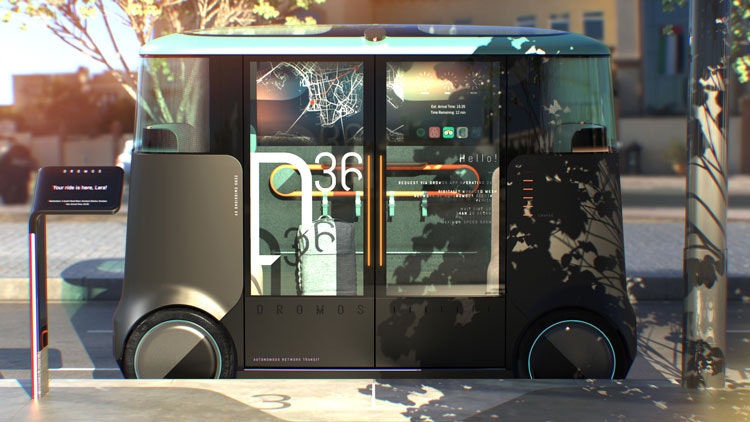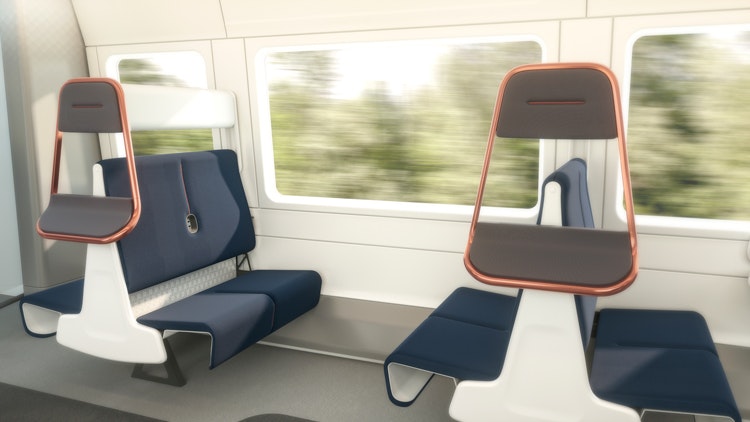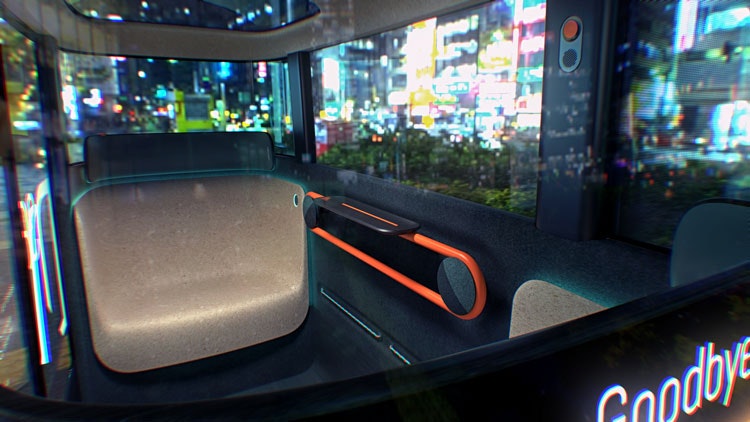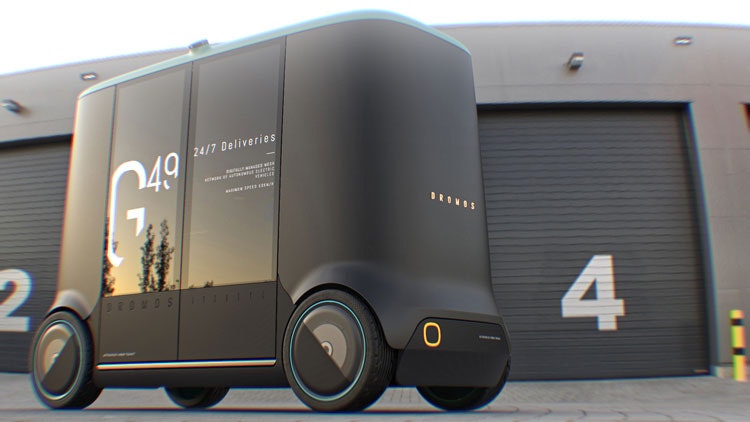Transport design consultancy PriestmanGoode has revealed the designs for a high-capacity autonomous vehicle called Dromos.
It is a collaboration with engineering company Dromos Technologies, which is based in Munich, Germany. The company develops autonomous network transit systems for urban areas and bills itself as a “revolutionary” solution to the high cost, space and time-related problems of traditional public transport.
How does Dromos work?

Dromos is a small autonomous electric vehicle, which has two seats facing each other. The brief was to create a vehicle that was “safe, reliable and affordable” with a focus on modularity and maintainability, the studio explains.
The vehicles will run on a closed-loop system on a 24/7 demand service from passengers who can call the vehicles to their location. It will have stops within 100m of locations, and some with direct access into buildings. One of its benefits over traditional public transport is a non-stop service which would create faster journey times, according to PriestmanGoode.
PriestmanGoode won the competition to design the vehicle with a modular interior design that is user-focused. Studio co-founder Paul Priestman tells Design Week that it was the people-centred approach that won the competition.
“Approachable minimalism”

The design has been inspired by “approachable minimalism” meaning that each feature serves a specific purpose. Priestman says that the aim was to design something practical rather than luxury.
It is modular — the interiors can be flexibly used according to different passengers’ needs, which might mean carrying bicycles, equipment or a wheelchair if the passenger has a disability. For added accessibility, there is step-free access and “extra-wide” doors, which would also be helpful for prams and wheelchairs Priestman says.
One of the most striking features of the design is the skylight and wraparound window space, which allows a full view of the surrounding city. The glass has a reflective coating that reduces solar heat absorption, and some of the surface will be tinted for privacy. Priestman also says that passengers will be able to connect their devices to the vehicles, for added personalisation.
Priestman notes that the flexibility of space means that there’s plenty of potential for Dromos as a transport option. One image shows it being used as a delivery system while another shows a postal delivery.
While it could be used by families on a journey (the seats are big enough for children to be carried on), it could also be incorporated into a commute.
The studio hopes that the vehicle will solve what it calls the “first and last mile problem”, which is the journey either side of a commute. It had released a concept at the early stages of the pandemic for this — a train seat that could store bicycles easily.

“Latest material technology”

The vehicles will be used in densely populated areas, many times a day. That means that cleanliness is a key focus, Priestman says. The seats have been moulded from sustainable and easy-to clean materials.
The material and finishes are still in development but will take taken into account the “latest material technology”.
PriestmanGoode head of CMF Maria Kafel-Bentkowska says: “The last few months have changed priorities in terms of materials and finishes. Hygiene has really come to the fore, and we’ve been working with suppliers to work on finding ways we can satisfy stricter hygiene standards as well as keeping sustainability at the forefront.”
Environmental benefits
The vehicle also aims to be a more environmentally-friendly solution. At point of use, it is also CO2 neutral and “ultra-quiet”, according to PriestmanGoode. The studio also says that it has lower construction and operating costs, lower space consumption and shorter construction times compared to conventional mass transport systems such as metro and rail.
There have been many recent concepts which have aimed to solve the problems of pandemic travel — mainly the issue of social distancing on crowded inner city networks. As the Dromos will only carry a small number of people (and likely to be those of a single household), it also has new relevance after the pandemic, Priestman points out.
A “dedicated infrastructure”

Autonomous vehicles have often encountered difficulty when it comes to integration. Dromos will rely “on its own dedicated infrastructure which allows for safe and fast service” according to its website.
It is reminiscent of other plans. At this year’s Consumer Electronics Show in Las Vegas, Toyota revealed plans for an interconnected “Woven City” which would incorporate autonomous vehicles.
There is no set date for the roll-out of the vehicles, but PriestmanGoode and Dromos Technologies are currently working on the final design details for production.

- Design disciplines in this article
- Industries in this article
- Brands in this article







